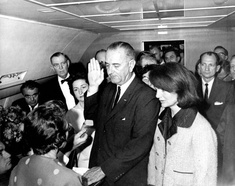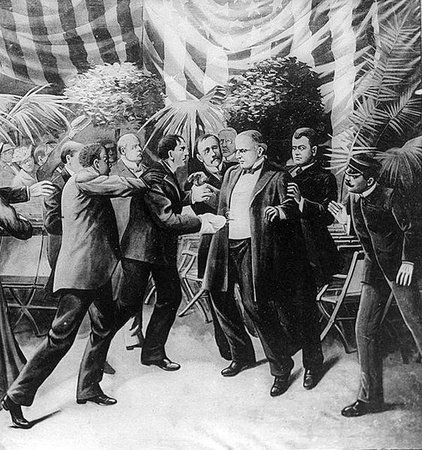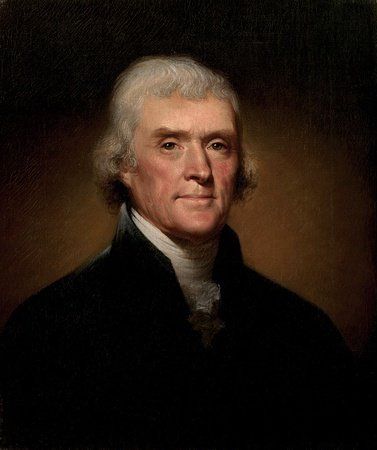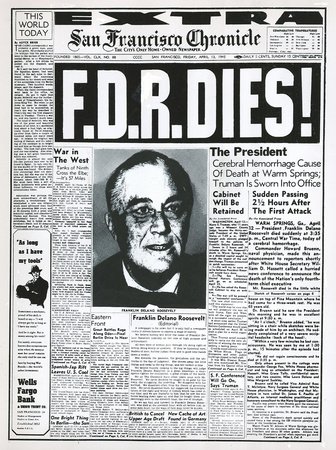
Presidential Succession Explained
First published: Sunday October 8th, 2023
Report this blog
Introduction
Being the American president is technically the deadliest job in America, and although some die in office due to natural causes, 4 have been assassinated. But who becomes president afterward (besides the VP I mean). I'm breaking down presidential succession and the history behind it. In this blog I'll start by giving you a bit of background, going back to 1840. Then we'll examine the laws around succession before viewing it (and critiquing it).
History of Succession
The first eight presidents of the United States had come and gone without a hitch (in terms of mortality while in office). Then in the election of 1840, Americans voted in William Henry Harrison (Whig) and John Tyler as VP. Because of economic conditions at the time, Incumbent president Martin Van Buren (D) didn't really have a fighting chance. It was also the first time a Whig had been elected to the presidency. On inauguration day it was freezing in Washington D.C. and President Harrison gave the longest inaugural address in history, around 2 hours (for comparison: Joe Biden's was 21 minutes). While delivering the address, his attire wasn't suited for the winter weather. He had no coat, hat or gloves to speak of. Even with back in the day medical knowledge, you know not to stand in the cold for two hours without any real protection. Because of this, the president came down with pneumonia. He died around a month later, making him not only the first president to die while in office, but the shortest serving president.
So, because the President dies, that means the VP becomes the President right? Well... there was no real precedent for this. Tyler essentially got a judge to administer the oath of office and he moved into the White House. Congress had a different view on presidential succession and it wasn't until the 25th amendment (which we'll get to later) was passed more than 100 years later that we would find out whether Tyler was right or not.
Regardless of political squabbles in the 1840s, yet another president would die in office just 9 years later. Zachary Taylor (yet another Whig) died in 1850 and yet another VP became the President, this time it was Millard Fillmore. Aside from these two, 6 more presidents would go on to die in office:
Abraham Lincoln (assassination)
James A. Garfield (assassination)
William McKinley (assassination)
Warren G. Harding (heart attack)
Franklin D. Roosevelt (stroke)
John F. Kennedy (assassination)
This is why the president of the United States is the deadliest job. The first three assassinations could of likely been prevented with modern security tactics and the fourth one... we won't get into it right now.

Laws Around Succession
Constitution: The Constitution was rather vague about presidential succession. In Article II, Section 1, it declared that if the President is unable to complete his term in office (by resignation, death, removal or inability to discharge the duties of the office), the Vice President shall assume the position. This left the door open to a whole host of questions, most notably being what makes a president inable to discharge the duties of the office? Is he sick? Mentally unstable? The framers left it at this and told the new Congress to sort out the details.
Presidential Succession Act of 1792: Congress did (after much debate) establish a line of succession after the Vice President, placing the President pro-tempore of the Senate in the 2nd spot and Speaker of the House of Representatives in 3rd. Cabinet positions had not yet been established in the line of succession, largely due to the Federalist Congress wanting to exclude Secretary of State Thomas Jefferson, a vocal anti-federalist. It's also worth noting that the Constitution says nothing (explicitly) about cabinet positions. President Washington established them himself to assist him in his work, and so Congress may have also overlooked them for this reason.

Presidential Succession Act of 1886: After the assassination of President James A. Garfield, Congress revised president succession, and added cabinet positions to the line as well. However the act removed the Congressional offices (the only ones that are elected) from the line of succession, favoring only cabinet positions in order of seniority (explained later).

Presidential Succession Act of 1947: After the death of President Roosevelt, new President Harry S. Truman advocated for a change to the line of succession, including putting the Speaker and Senate pro-tempore back in the line. Truman believed that the only two elected positions should be highest in line, and thus the Speaker of the House was placed in 2nd, and the senate pro-tempore in 3rd, and then cabinet positions by seniority. This is basically the system we have now, but it wouldn't be set in stone until the 25th Amendment.
25th Amendment: The 25th Amendment to the U.S. Constitution was the most extensive and comprehensive presidential succession law. Firstly, it yet again confirmed that upon the vacancy of the office of president (by death, resignation, etc.), the Vice President immediately becomes President. Secondly, it mandates that if the office of Vice President is vacant, he shall nominate a replacement and the new VP must be confirmed by both houses of Congress. Thirdly, a new clause states that if the President transmits to the Speaker and President pro-tempore that he is unable to discharge the duties of his office, the Vice President shall be acting president.
At this point, we need to pause and explain the difference between the office of President and an Acting President. The president declares himself inable almost never. It's most frequently used when the president has an operation where they're under anesthetic. This way, the VP, now acting president can maintain nuclear weapon commands. However, when the president transmits to the Speaker and president pro-tempore that he is once again able, things resort back to normal. Essentially, Acting President is a temporary position where the VP isn't president but rather has the powers of one.
Back to the amendment, the final clause is much more complicated. It starts by saying that if the Vice President and a majority of cabinet members transmit to the Speaker and president pro-tempore that the president is inable to discharge the duties of his office, the Vice President becomes not president, but Acting President. The former VP, now president can then submit to the same two people that the former president is now able to be president again and everything reverts back to normal. Now if this isn't complicated enough... get this.
The Acting President and a majority of the cabinet members can now say that the former president is inable period. This means the former president cannot be president again and the VP (now acting president) will stay. Congress has 21 days to decide the issue. If within this 21-day period, both houses of Congress declare by a 2/3 majority that the former president is inable, the Acting President (former VP) shall be Acting President permanently (that's right, now president). If Congress either doesn't vote for this, or takes over the 21 days, the former president is now president again.
Phew! Now that was confusing! To read the full amendment, click here.
The Line of Succession
Okay, now it's time to see what we've been waiting for. The line of succession for President of the United States:
1. Vice President
2. Speaker of the House of Representatives
3. President pro-tempore of the Senate
4. Secretary of State
5. Secretary of the Treasury
6. Secretary of Defense
7. Attorney General
8. Secretary of the Interior
9. Secretary of Agriculture
10. Secretary of Commerce
11. Secretary of Labor
12. Secretary of Health and Human Services
13. Secretary of Housing and Urban Development
14. Secretary of Transporation
15. Secretary of Energy
16. Secretary of Education
17. Secretary of Veteran's Affairs
18. Secretary of Homeland Security
In the 25th Amendment, it mandated that after the VP, Speaker, and president pro-tempore, the Cabinet Members are next in order of seniority. What does that mean? It simply means the order the department was created. George Washington created the first 4, the Departments of State, Treasury, Defense, and Justice (led by the Attorney General).
Critiques
Now for starters, the Secretary of the Interior is ahead of the Secretary of Homeland Security. Because of order of seniority, it leads to an odd order. Furthermore, let's say there was a deadly virus spreading through Washington. The president and the first 4 die. Who would you rather have as president. The Secretary of the Treasury or the Secretary of HEALTH and Human Services. Or what if there was a nuclear attack on the president and the first 2. Would you rather have the president pro-tempore (who is the oldest member of the senate) or the Secretary of Defense.
Summary
What do you think the line of succession should be? Does it need to be changed? Or should we go back to 1886 where the cabinet is ahead of the legislatures?
If I get 15 likes on this blog, I'll come out with my ideal line of succession.
Thanks for reading!

1. Vice President
2. Speaker of the House
3. Secretary of State
4. Attorney General
5. Secretary of Defense
6. Secretary of the Interior
7. - 18. Remaining cabinet positions in order of establishment
All would be president, too, none of the acting stuff.